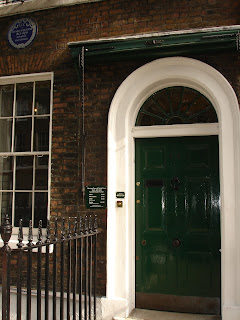A History of Food in 100 Recipes by William Sitwell
Published by: Little, Brown and Company
Published on: June 18, 2013
Page Count: 360
Genre: Cookbook, history
My Reading Format: Advanced reading copy in e-book provided by the publisher through NetGalley
Available Formats: Hardcover, Kindle book
My Review:
William Sitwell, food writer and television personality in Great Britain bid on several 19th century cookbooks at an auction in 2010 and won them. While reading through them later, the idea for this book was born. What he discovered was that even centuries ago, those who wrote down recipes became authorities on food, and therefore, in some cases, also culture and hospitality, either in his or her own circle of friends or to a larger audience. Things haven't changed much over the years. With more research, Sitwell chose 100 recipes written down by cooks that we may already be familiar with or have never heard of. Either way, those recipes, in some way, shaped the food culture of its time. (He makes the disclaimer early that a recipe from centuries past may not be cookable by someone in a modern kitchen today, but that some of his chosen recipes would be.) Starting with ancient Egyptian bread, the recipe for which was painted on the wall of a tomb in 11 BC, Sitwell takes us through food history, all the way to modern-day recipes by cooks that are a regular part of our lives through their books or television shows today.
Though the 100 recipes are from a wide range of countries and cultures, Sitwell's cultural references are heavily British assuming in places that his readers will know exactly what he's talking about. I didn't always. However, that didn't take much away from my enjoyment of the book.
I enjoyed reading about recipes I'd never heard of and never realized what a major impact some of them had in their time. Some of those were very interesting, such as John Evelyn who was the first person to advocate for salads and create a dressing for them in the 1600s and Mary Eales, who invented ice cream in 1718. As an American, the buttered apple pie recipe from Amelia Simmons' American Cookery in 1796 was an important one, as was Eliza Leslie's cupcake recipe from her 1834 book Miss Leslie's Behaviour Book: A Guide and Manual for Ladies. Also included were other fun things like the evolution of the cocktail party in the mid-20th century, the start of Gourmet magazine and epicurious.com, and today's TV food personalities like Emeril, Mario Batali and Jamie Oliver, and food personalities we'll never forget (i.e. Julia Child).
If you're interested in food culture and its history, both ancient and modern, you'll like A History of Food in 100 Recipes.
Four out of five stars
If you think you'll like this book, I also recommend Eating by Jason Epstein.







